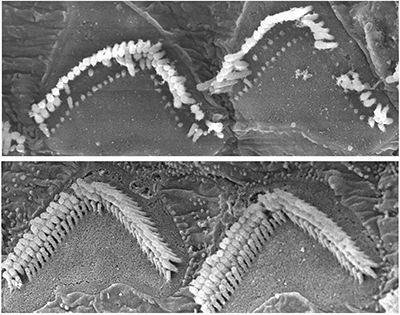
Harvard Medical School researchers have taken another decisive step in their efforts to develop a gene therapy for people with Usher syndrome type 1F, a rare condition that causes deafness and progressive blindness.
A new way of delivering a corrected version of the faulty gene that causes Usher syndrome — PCDH15 — restored hearing in mouse models and showed potential in retinal organoids and nonhuman primates for improving vision, the team reports in the Journal of Clinical Investigation.
This is the second experimental gene therapy for Usher syndrome developed by the lab of David Corey, the Bertarelli Professor of Translational Medical Science in the Blavatnik Institute at HMS. Earlier research showed that a different gene-delivery strategy restored hearing in mice. The new method provides a second option if the first approach proves unsafe or ineffective when tested in humans.

Authorship, funding, disclosures
Members of the Corey Lab worked with colleagues at the Institute of Molecular and Clinical Ophthalmology Basel and the University of Basel in Switzerland. Additional authors are Daniel M. Hathaway, Eric M. Mulhall, Kevin T. Booth, Mantian Wang, Cole W. Peters, Alex J. Klein, Xinlan Chen, Yaqiao Li, and Bence György.
This work was supported by the National Institutes of Health (grants R01-DC016932 and R01-DC020190 and fellowship T32-GM007748), the Bertarelli Foundation, the Seamans Family, and the Swiss National Science Foundation (grants PCEFP3_202756 and 310030_192665). The authors acknowledge the HMS MicRoN Microscopy Core and Electron Microscopy Facility and say that continued support from the Usher 1F Collaborative is especially appreciated.
The President and Fellows of Harvard College have filed U.S. Provisional Application No. 18/025,719, DUAL-AAV VECTOR DELIVERY OF PCDH15 AND USES THEREOF, with Corey, Mulhall, and Ivanchenko listed as inventors. The other authors have declared no conflict of interest.







